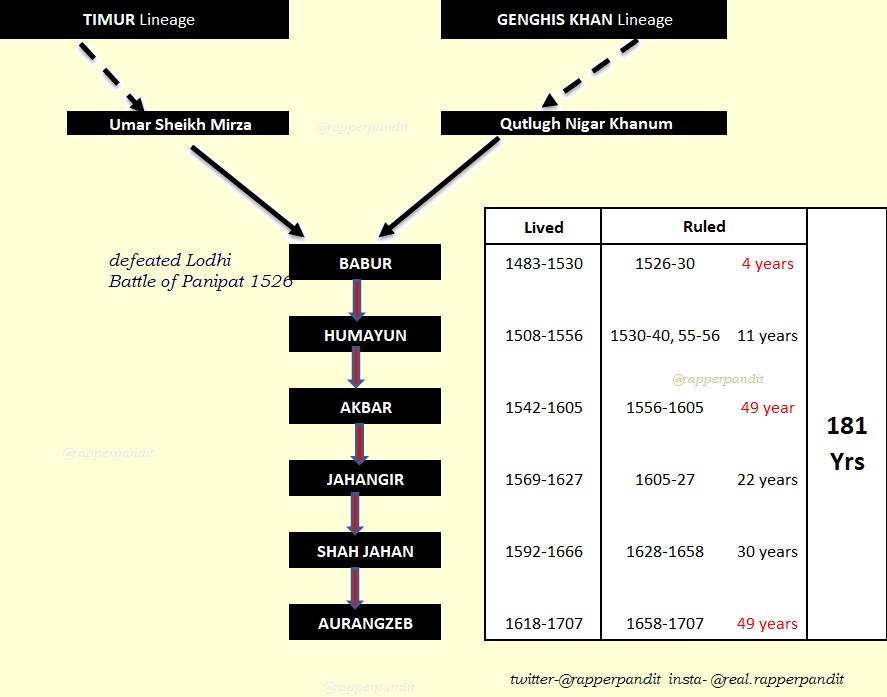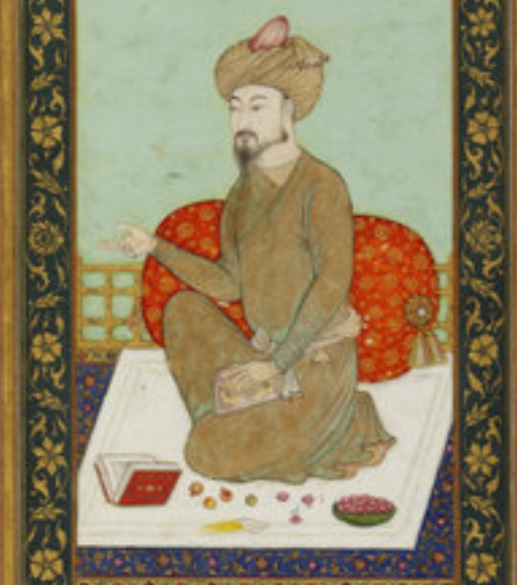*महारावल जैसलदेव जी के बाद उनके पाटवी पुत्र काल्हण जी महारावल बने। महारावल काल्हण जी के पुत्र पाल्हण जी के पुत्र जसहड़ जी के वंशज जसोड़ भाटी कहलाए।
इसी वंश परम्परा में दूदा जी जसोड़ जैसलमेर के महारावल जी बने।
रावल़ मूल़राज अर रतनसी फरै साको करियां पछै जैसल़मेर रो गढ घणा दिन सोग में डूब्योड़ो सूनो पड़ियो रह्यो।
जैसल़मेर जैड़ो गढ अर सूनो !!आ बात जद महेवै रै कुंवर जगमालजी मालावत नै ठाह पड़ी तो उणां आपरा आदमी अर सीधै रा सराजाम लेय जैसल़मेर कानी जावण रो मतो कियो।
उण दिनां काल़ काढण नै सिरूवै रा रतनू चंद्रभांणजी ई महेवै रैता, ऐड़ी सल़वल़ सुणी तो चंद्रभांणजी आपरै दादै आसरावजी नै समाचार कराया कै राठौड़ जैसल़मेर रो गढ दाबणो चावै!!
आसरावजी उणांनै पाछो कैवायो कै -
"जैसल़मेर जितो भाटियां रो गौरव उतो ई आपां रो गुमेज सो अजेज दूदे अर तिलोक नै कीकर ई समाचार करा जिकै सिंध में बैठा है।"
वे रात रा अंधारै में आपरी सांयढणी माथै डोल़ कर टुरिया जको रातोरात जसहड़ रै बेटां दूदे अर तिलोकसी नै समाचार भुगताय पाछा आय राठौड़ां भेल़ा होया।
राठौड़ बाजरी रै पाखल़ै भर अर आपरा आदमी लेय जैसल़मेर कानी बुवा।
आसणीकोट कनै आया जदै रतनू आसरावजी आय जगमालजी नै मनवार करी कै म्हारी छांनड़ी गुढै ईज है ,राज !! पवित्र करो अर कुरल़ो थूक म्हनै ई मोटो करो!!
जगमालजी जाणता कै रतनू आसराव मोटो आदमी अर भाटियां रो आदरणीय है सो इणनै ई साथै लेय गढ में बड़णो ठीक रैसी।
सो उणां आसरावजी री मनवार राखी।
आपरी गाड्यां जैसलमेर कानी टोर खुद अर बीजा सिरदार सिरूवै आया।
बिछायतां होई।वल़ री तैयारी होवण लागी।जगमालजी खतावल़ करै अर आसरावजी उणांनै बातां अर कायब सूं भूलथाप दैवै।
रोटीबेल़ा सूं दोपारो अर दोपारै सूं खीचड़ै री वेल़ा होई पण रोटी री होल़ी मांगल़ी ई नीं!!
जगमालजी कह्यो "बाजीसा घोड़ी बिल में बड़ै !!इती बखत नीं है म्हां कनै ।आप तो है जकी लावो !जोगमाया रो प्रसाद मान माथै चढाय लेसां।आपनै संकोच री जरूत नीं है।घर सारू पावणो होवै,पावणै सारू घर थोड़ो ई होवै!!"
आसरावजी कह्यो
"अरे वडा सिरदार कद भांडां रै भैंस्यां दूजै अर कद छछवार्यां छाछ नै आवै!!आपरो कद काम पड़ै म्हारै घरै आवण रो सो आपरै सारू रोटी बणतां जेज लागसी!!"
यूं करतां दिन बधियो।
आसरावजी नै समाचार मिलिया कै दूदो अर तिलोकसी आय गढ में जमग्या है।उणां रै जीव में जीव आयो।
जितै भोजन री तैयारी होई ।हेरां आय जगमालजी नै समाचार दिया कै गढ में भाटी आय बड़िया।उणां रात रै अंधारै में देखियो तो गढ सूं चानणो दीसियो।उणां आसरावजी नै पूछियो कै गढ में कुण आयो !!
आसरावजी इचरज में पड़तां कह्यो कै
"हुकम और तो ऐड़ो कोई भाटी जाणियो नीं ,हो सकै दूदो-तिलोकसी जसहड़ोत आयग्या होवै तो ठाह नीं!!
ठालाभूला है!मोत नै टिल्ला देता अर बांथियां आवता बैवै!!"-
जीम भोज जगमाल,
तुरँग दिस करी तियारी।
कहियो हेरां कांन,
एम गल गई अपांरी।
दुरजनियो डकरेल,
उरड़ गिर जैसल़ आयो।
मरियां पैली माड,
न दै जसहड़ रो जायो।
गोठ रो मरम गढपत जदै,
जगमालै झट जाणियो।
आस नै रंग देयर उमंग,
तुरंग खेड़ दिस तांणियो।।
जगमालजी जाणग्या कै बाजीसा जणै ई रोटियां नै मोड़ो कीधो।
उणां रात उठै ई वासो लियो अर दिनूंगै दूदेजी नै समाचार कराया कै
"धायां थांरी छाछ सूं म्हांनै कुत्ता सूं छोडावो यानि म्हांरी गाडियां अर बाजरी पाछी दे दिरावो।
दूदेजी अर तिलोकसी आपरै धोबां सूं सुगनां री हजार धोबां बाजरी पाछी दी ।बाकी आपरै कोठार में नखाई।
जगमालजी रै आदम्या कह्यो कै
"भाटी है किताक !!चढो!! जको धका देय गढ खोसलां ला!!
जगमालजी रै बात जचगी पण आसरावजी कह्यो कै-
चला र मोत रै मूंडै जावणो ठीक नीं है।
आ दो आदम्यां रै मिण र दियोड़ी बाजरी है सो थां मांय सूं टणका दो आदमी मिणलो। उवां दी जितरी होवै जणै तो मतो करिया नीं जणै आया बिनै ई जावणो ठीक रैसी!!"
जगमालजी ,बाजरी मिणाई जको बारै सौ -तैरै सौ धोबा होया!!
आसरावजी कह्यो कै जकां रै मुट्ठै मोटे !उणां री तरवारां री मूठां ई मोटी!!लागै जको पाणी ई नीं मांगे।
जगमालजी समझग्या कै जैसल़मेर हाथ नीं आवै।
राठौड़ां रो मन मोल़ो पड़ियो।
उणां पाछी जावती बखत दो सांसण रोहड़ियां नै दिया।एक सांगड़ अर दूजो ओल़ेचा।
गोरहर में दूदेजी री आण फिरी।
दूदोजी नखतधारी रावल़ होया।जिणां गोरहरै रो गुमेज बधायो।बांकीदासजी आ तक लिखै जैसल़मेर रो जनम रावल़ दूदे रै घरै।
राज करतां नै दस वरस होवण लागा जणै सोचियो कै मरणो तो एक दिन है ई पछै क्यूं नीं जसनामो करर मरूं!!उणां पातसाह रो खजानो खोस लियो।दिल्ली खबर पूगी।सेना आई ।गढ घिरियो।
राजपूतां साको करण अर रजपूताणियां जमर कर अमर होवणो तय कियो।
रात रा दूदेजी सूता अर
उणां रो एक राजपूत धाऊ भाछेलो जिणरी ऊमर 15-16वरस री,इणां रा पग चांपै।अचाणचक दूदेजी री पगथल़ी माथै आंसू रो टोपो पड़ियो।
दूदोजी रो ध्यान भंग होयो।उणां धाऊ रै साम्हो जोयो तो चानणै में उणां नै लागो कै धाऊ उदास अर आंख्यां जल़जल़ी!!
दूदेजी उणरै खांधै माथै हाथ देयर कह्यो
"जा रे गैला!!दूदे री रोटी खाय !मोत सूं डरै!!तैं सुणी नीं कै देस खातर अर धणी खातर मरै वो सीधो सरग जावै अर उणरो जस संसार गावै!!"
धाऊ नीची मीट घाल बोलियो-
"हुकम !म्है आपरै ऐठोड़ो खाधो है,मोत सूं हूं कांई डरूं !!मोत तो म्हारै सूं लुकती बैवै!!"
तो पछै मरण पथिक रै आंख में आंसू!! कांगैपणो रो प्रतीक है!!राजपूत होय इयां बाई री गल़ाई रोवणकाल़ो क्यूं होवै?" दूदेजी पूछियो तो धाऊ कह्यो-
"हुकम !म्है सुणी है कै कंवारा मरै उणां नै कठै ई गत नीं मिलै!!उणांनै लूण ढोवणो पड़ै।आ देखो ऊपर आकाश गंगा !!ऐ सगल़ा बापड़ा कंवारिया लूण ढोवै!!म्हनै ई सरग नीं उठै जाय आं रै भेल़ो लूण ढोवणो पड़सी!!"
थूं म्हारो राजपूत है!!थारी ओगत मतलब म्हारो मरण बिगड़णो!! दूदेजी आ कैय हाजरियां नै कह्यो -
"दो भायां नै अर मा'राज नै बुलावो!!"
भायां अर मा'राज आय अरज करी -
खमा !!कांई आदेश?
"म्हारी बेटी ,म्है इण धाऊ नै दी !!हणै फेरा करावो।प्रभात रा आपां सगल़ा सरग हालसां!!"
भायां कह्यो -
हुकम -
बाई !!इण धाऊ नै!!"
"हां ,इण धाऊ नै!!
राजपूत !!कांई छोटो अर कांई मोटो!!हाड ऊजल़ो अर तरवार में पाणी होवणो चाहीजै। अर ऐ दोनूं बातां इण धाऊ में है!!फेरां री तैयारी करावो!!नीं तो म्हनै मरियै नै मुखातर नीं!!" दूदेजी पाछो जाब दियो।धणी रो धणी कुण?
दूदेजी आपरी बेटी धाऊ नै परणाई।
सवार रो साको होयो।
सवार रा सूरज री किरणां रै साथै ई भाटियां मुसल़ां माथै किरमाल़ां काढी।
दूदोजी नाम रै गुण ज्यूं ई दुरजनां नै सालता रणांगण में विकराल़ रूप में जूझै हा।
लारै सूं किणी माथै रै झाटको बायो जको सिर न्यारो अर देह न्यारी!!हमें कुण कैवै कै ब्याव भूंडो!!
बिनां माथै लड़ती देह अर अरियां री झड़ती लासां नै देख घणै दोखियां नीसासो खाधो। सेवट आयो सो जावै।रावल़ दूदैजी री देह ई शांत होई।
एकर भल़ै गोरहर रा गौरव दीप बुझग्या।
गढ में मुसलां रो थाणो बैठो,भाटी पाछा दुरबल़ पड़िया।
रावल़ रतनसी रो कुलदीप घड़सीजी दर -दर भटकता मेहवै पूगा।किणी रै घरै रातवासो लियो।दिनूंगै घड़सीजी दांतण करै अर अठीनै अठै रो कुंवर जगमालजी निकल़िया।असैंधो आदमी देख कुंवर खराय साम्हो जोयो पण घड़सीजी कोई गिनार नीं करी!!आ बात बलाय रै बटकै जगमालजी रै खुभगी।उणरै ई घरै कोई उणनै आवकारो नीं दे आ बात वे कीकर अंगेजै।उणां जाय रावल़ मलीनाथजी नै अरज करी कै एक ओपरो राजपूत फलाणै घरै कुरल़ो करै हो ,म्हनै जंवारड़ा नीं करिया सो लागै कै तो सफा भुछ है कै कोई देसोत है।
रावल़जी तेड़ायो ।घड़सीजी अदब सूं मिलिया।ओल़खाण होई।रावल़जी आपरी पोती विमलादे परणाई।
रावल़जी सूं रजा मांग ,घड़सीजी जैसाण री धरा में आया।*आपरो रावल़ो *बधाऊड़ै रतनू *भोजराजजी* रै घरै उणां रै भरोसै भोल़ाय पातसाह री सेवा में बारै आदमी लेय गया।
इणां में दस राजपूत अर दो दादो -पोतरो *रतनू आसरावजी अर चिराईजी हा*।इणी चिराईजी रा सपूत रतनू भोजराजजी आपरी बखत रा सपूत चारण हा।इण बात रो दाखलो नैणसी आपरी ख्यात में इण भांत दियो है-
*तरै रावल़़ घड़सी आपरा माणस लेनै फल़ोधी रै किनारै सिरड़ां रै किनारै गांव बधाऊड़ो छै तठै माणसांनूं राखनै आप पातसाह री ओल़ग गयो।उठै वरस 12चाकरी कीधी ।आदमी 10तथा 12 भाटी आदमी 2 चारण कनै था उठै बोहत परेसान हुवा।भूख गाढा दबाया।*
घणा दिन सेवा करी।जणै पातसाह भाटी लूणंग ऊदलोत री रजवट सूं रीझियो अर कह्यो मांग!!जणै लूणंग कह्यो म्हांरो देस जैसल़मेर पावां।
पातसाह घड़सीजी नै परवानो लिख दियो।
घड़सीजी साथ साथै टुरिया सो बैतां बैतां राजबाई तलाई गुढै आया जणै इणांनै अपसुगन होया।साथ रुक सुगन विचारिया।सुगनी कह्यो धरती मिनख रो वल़ मांगै!!
कनै गिणती रा आदमी अर वे ई बिखै रा एक सूं बधर एक साथी ।धरती नै किणरो भख दियो जावै!!पूरो साथ गताघम में।
भाटियां नै दोघड़चिंता में देख रतनू आसरावजी बोलिया कै-
"थे सगल़ा एकूंको आदमी अर म्हे एकै घर रा दो।म्हारी इच्छा आ ईज होती कै जैसाण पाछो रावल़ रतनसी रै घरै आवै।सो आयो ,म्हे घणो ई सुख-दुख दीठो !!हमें नीं जीयां लाभ अर नीं मरियां हांण!!म्हारी वल़ जमी नै देय धपावो।अंकै ई विचारण री बात नीं!!"
आसरावजी री आ बात सुण एकर मून पसरगी पछै घड़सीजी बोल्या बाजीसा आ कीकर हो सकै!!म्हांरै हाथां आपरो भख !!रैयत नै कांई मूंढो बतावला अर कांई ऐड़ै राज रो करांला जिको आपरो रगत पी म्हारै गुढै आवै!!कांई म्हारी जात रै बटो नीं लागै कै-
*भाटी बदल़ै रतनुवां,*
*जो कुल़ सूधो नाय!!*
आसरावजी पाछो कीं कैता जितै साथ नै लारै घोड़ां रा पौड़ बाजता अर खेह उडती दीसी!!
जैसलमेर दुर्ग के प्रथम प्रोल के सामने ढिब्बे पाड़े में महारावल दुर्जनशाल जी और उनके अनुज राणा त्रिलोकसी जी देवलियां व छत्रियां मुख्य बाजार से दक्षिणी गली में २० फीट की दुरी पर मौजूद है॥ ये हमारे पावन तीर्थ है॥
ऐसे अद्वितीय योद्धाओं के बलिदान दिवस मनाना हमारे लिए गौरव की बात है।
वर्ष के चैत्र सुदी एकादशी को मातेश्वरी देगराय मंदिर में हजारों लोगों की उपस्थिति में समारोह पूर्वक महारावल दूदा जी का बलिदान दिवस मनाते है।



























































